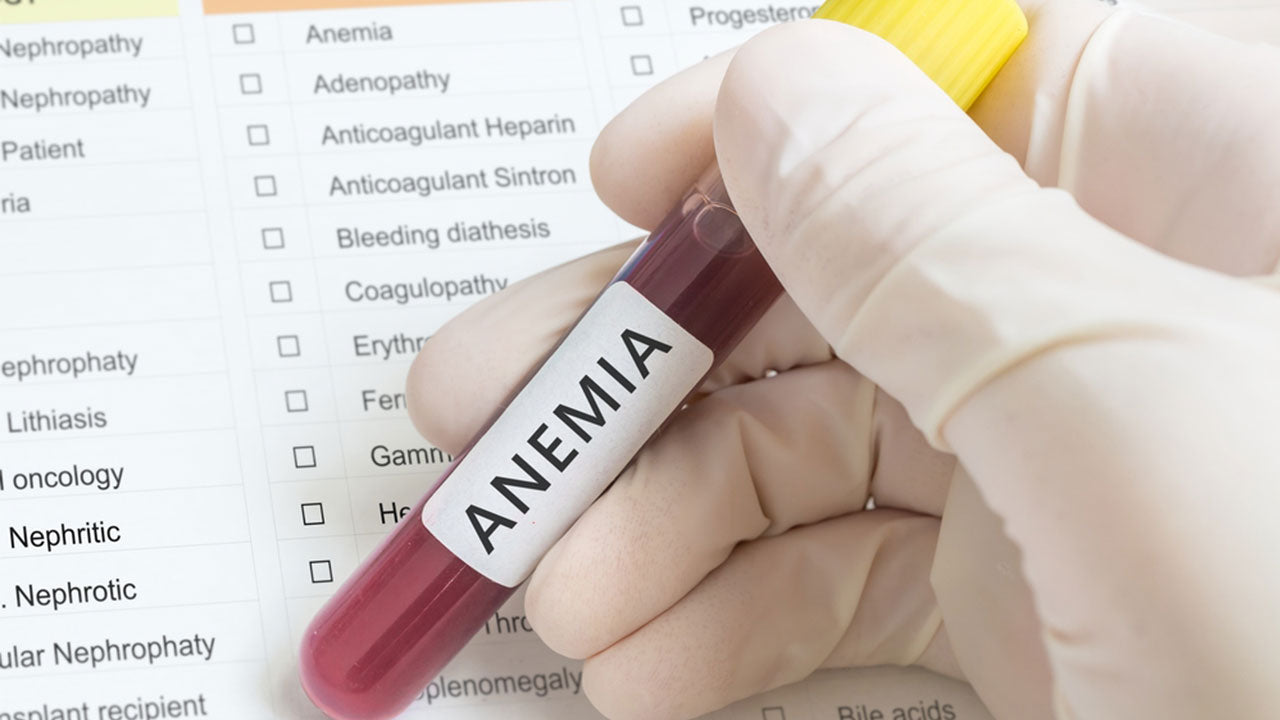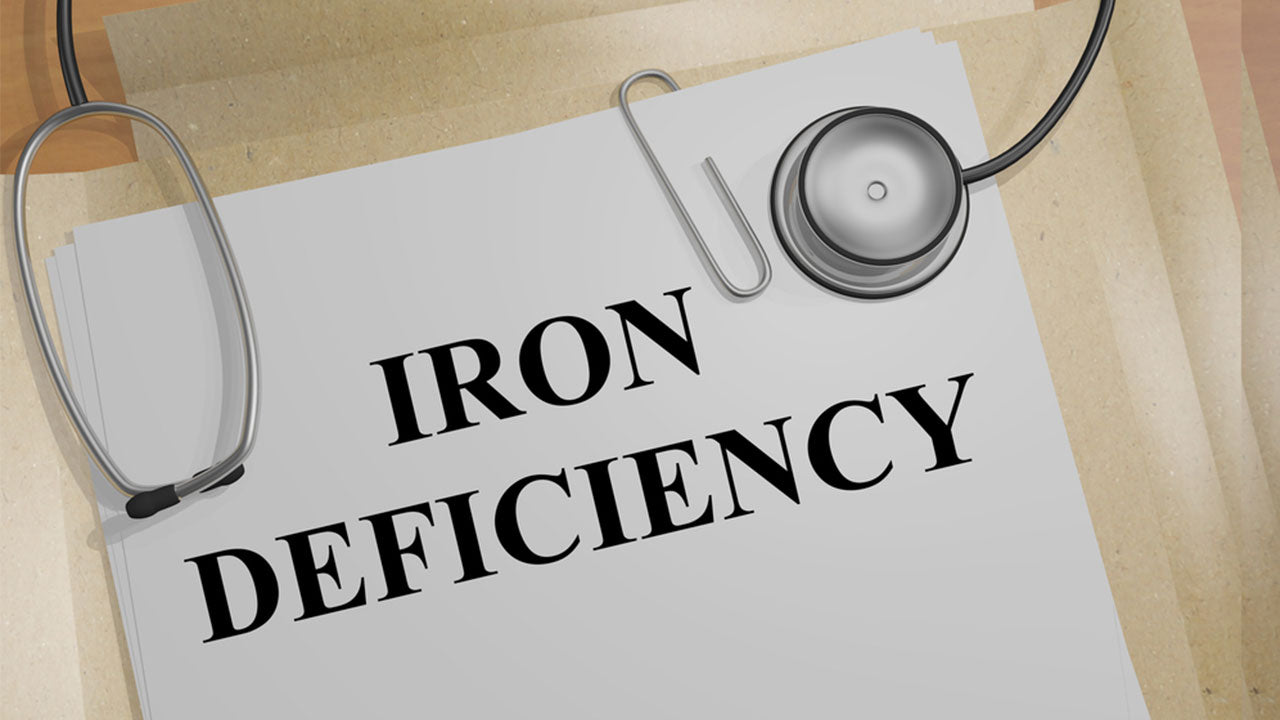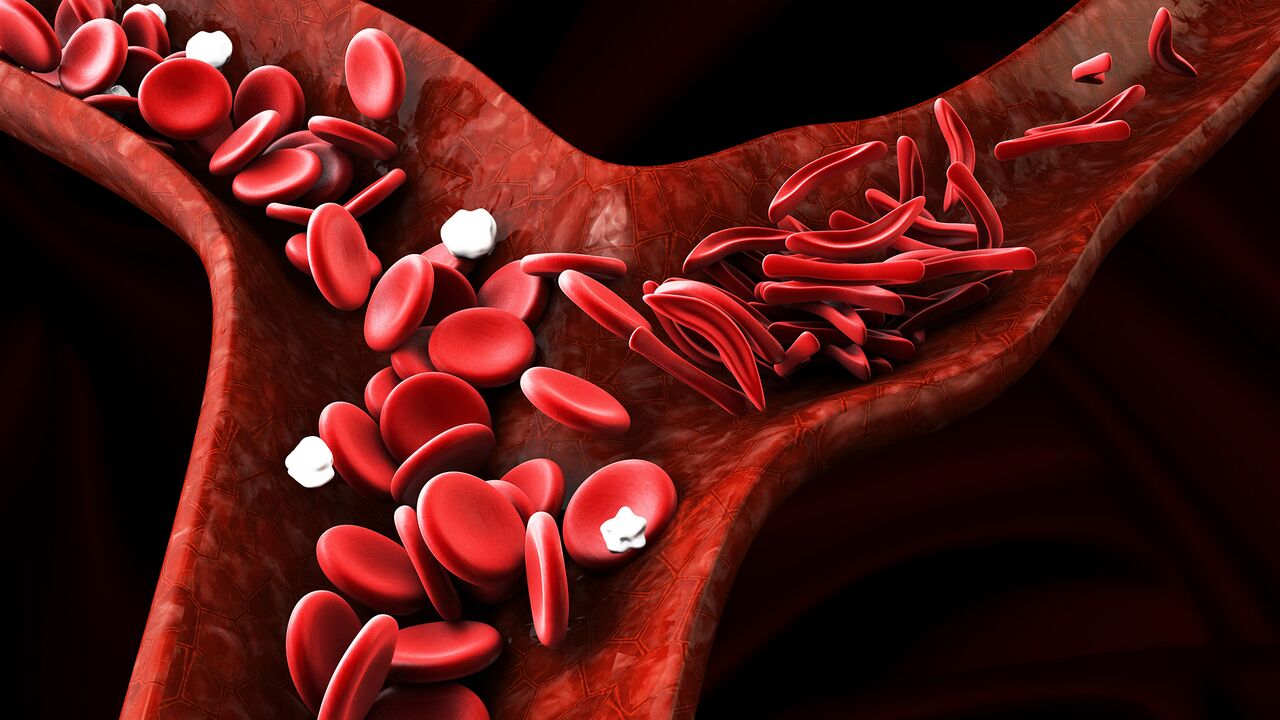All About Anemia: Types, Symptoms, Causes, Treatments
 By: by Amino Science
By: by Amino Science

Anemia is a condition that develops when there is a deficiency of red blood cells (RBCs) or hemoglobin (hemoglobin helps your red blood cells carry oxygen to your body's cells). If red blood cells or hemoglobin are abnormal or low, the cells do not get enough oxygen.
Affecting 3 million Americans, anemia is the most common blood condition in the U.S. There are different types of anemia, and certain forms are hereditary. During their reproductive years, women are at higher risk of developing anemia due to blood loss from menstruation as well as the increased need for blood during pregnancy. People with chronic diseases and older adults are also at risk. Come with us as we explore the many different aspects of this blood disorder.
Types of Anemia
There are more than 400 types of anemia. Here are a few of the most common.
Iron Deficiency Anemia
This type of anemia is the most common cause of anemia attributed to not getting enough iron, which is needed to produce hemoglobin for red blood cells. It is important to eat iron-rich foods such as lean meats, which are also excellent sources of amino acids, to provide the body with the nutrients it needs for optimal production of red blood cells. Blood loss, such as heavy menstrual bleeding, and regular use of some pain relievers such as aspirin, can cause iron deficiency anemia.
Vitamin Deficiency Anemia
The body also needs folic acid and vitamin B12 to produce red blood cells. If you follow a diet that lacks these key nutrients, you may be at risk of developing vitamin deficiency anemia. Animal products such as lean meats and eggs are recommended sources of B12, and leafy green veggies and beans provide ample amounts of folic acid. Your health care provider may also recommend the use of dietary supplements to help increase levels of B12 or folic acid to normal. This type of anemia is also known as pernicious anemia.
Chronic Disease Anemia
Certain medical conditions such as cancer, HIV, rheumatoid arthritis, kidney disease, liver disease, Crohn’s disease, and other inflammatory diseases can cause anemia of chronic disease because they affect the production of blood cells.
Aplastic Anemia
This type of anemia is rare and can be life-threatening. It occurs when the body cannot produce enough blood cells (red blood cells, white blood cells, and platelets) because of infections, use of certain medicines, autoimmune diseases, and exposure to toxic chemicals.
Bone Marrow Disease Anemia
Bone marrow is the tissue located at the center of large bones where new blood cells are produced. Certain diseases such as leukemia and myelofibrosis can affect blood cell production and cause anemia. If there are not enough stem cells in bone marrow to turn into red blood cells, or if the stem cells present are damaged or taken over by metastatic cancer cells, bone marrow disease anemia may develop. The effects of this type of anemia can be life-threatening.
Hemolytic Anemias
This is a group of anemias that develops when certain blood diseases cause RBCs to rupture (a process called hemolysis) and the bone marrow cannot replace them fast enough. Hemolytic anemia can be inherited, or it can happen later in life.
Sickle Cell Anemia
This type of anemia is inherited, and it is caused by an abnormal form of hemoglobin that forces red blood cells to assume a crescent (sickle) shape. These irregular blood cells die prematurely, and the result of this is a chronic shortage of red blood cells.
Other Anemias
Other forms of anemia include thalassemia, an inherited blood disorder, and malarial anemia, a consequence of malaria.
Symptoms of Anemia
Anemia symptoms depend on the cause but some of the most common include:
- Fatigue
- Shortness of breath
- Weakness
- Dizziness
- Pale skin
- Rapid or irregular heartbeat
- Chest pain
- Headache
- Leg pain
- Insomnia

Other symptoms are associated with specific forms of anemia.
In the case of iron deficiency anemia:
- Hunger for strange substances such as paper or ice
- Upward curvature of the nails
- Soreness of the mouth with cracks at the corners
In the case of vitamin deficiency anemia:
- Tingling sensation in the hands or feet
- Lost sense of touch
- Stiffness of the arms and legs
Causes of Anemia
We have seen that different causes determine the type of anemia. We can divide the causes into three main areas.
Anemia Caused by Blood Loss
Red blood cells can be lost through bleeding, which may result from:
- Gastrointestinal conditions such as ulcers, hemorrhoids, gastritis, and cancer
- Regular use of anti-inflammatory drugs such as aspirin or ibuprofen
- Heavy menstrual bleeding and childbirth
Anemia Caused by Decreased Red Blood Cell Production
Red blood cells may be faulty or decreased due to abnormalities in red blood cells, such as from the condition hereditary spherocytosis, which causes a shortage of red blood cells, or a lack of vitamins. As a result, these conditions may develop:
- Iron deficiency anemia
- Vitamin deficiency anemia
- Bone marrow disease anemia
- Sickle cell anemia
Anemia Caused by Destruction of Red Blood Cells
Red blood cells may be fragile and die prematurely, causing hemolytic anemia. Sometimes this can be a congenital disorder without a specific cause. In other cases, the cause of anemia includes:
- Infections, drugs, or certain foods
- Toxins from liver or kidney disease
- Tumors, severe burns, certain chemicals
- Hypertension and clotting disorders
Anemia Treatments
Your doctor will typically diagnose anemia using the results of a physical exam, symptom assessment, and blood tests. A complete blood count (CBC) checks levels of red blood cells in your blood (hematocrit) and hemoglobin. A normal hematocrit value is 40-52% for men and 35-47% for women.
Your physician may also assess the shape and size of your red blood cells to rule out any abnormalities. Depending on the suspected type of anemia, your doctor may order additional diagnostic and hematology tests, such as a sample of bone marrow. Anemia treatments depend on the cause.
Iron Deficiency Anemia
The treatment for this type of anemia includes diet changes or iron supplements to increase iron levels. Animal proteins such as lean meats and eggs are recommended sources of iron, but if you follow a vegan diet, make sure you eat enough legumes and vegetables like spinach. Take a look at the top 10 iron-rich foods.
Vitamin Deficiency Anemias
The cause of vitamin deficiency anemia is typically B12 deficiency, and treatment requires diet changes and supplements. Take a look at the best foods that contain B12.
Amino acids can also be helpful in treating vitamin deficiency anemia. Studies show that iron amino acid chelates (iron molecularly attached to an amino acid), such as iron glycinate chelates, act as fortificants and therapeutic agents in the prevention and treatment of iron deficiency anemia, for instance.
Chronic Disease Anemia
When treating chronic disease anemia, doctors focus on curing the disease that is the cause of the anemia. The treatment depends on the symptoms—if they develop into severe anemia, a blood transfusion or injection of the hormone that stimulates red blood cell production and eases fatigue may be performed.
Bone Marrow Disease Anemia
There are different types of bone marrow disease anemia, and the treatment can include medication, blood transfusions, chemotherapy, or bone marrow transplantation. Studies show that the amino acid L-leucine can help in the treatment of diamond-blackfan anemia, a disorder of the bone marrow.
Hemolytic Anemias
People who have this type of anemia should avoid taking drugs that suppress the immune system and attack red blood cells. If the disease is severe, a transfusion or plasmapheresis may be necessary.
Sickle Cell Anemia
Treatment for this type of anemia may include the administration of oxygen and pain-relieving drugs (approved by your doctor). Blood transfusions, supplements, and antibiotics may be recommended, and, in some instances, a bone marrow transplant may be effective.
Anemia Outlook
While sickle cell anemia and other inherited anemias can be severe and carry life-threatening complications, for the most part, anemia is a treatable condition, so it's important to be on the lookout for signs. Anemia requires your heart to pump extra blood to make up for the lack of oxygen in the blood, which can lead to an enlarged heart and heart failure. And pregnant women with vitamin deficiency anemia may be subject to complications such as premature birth.
Prevention is key.
- Eat an iron-rich diet.
- Ingest vitamin-C with iron so it's better absorbed.
- Don't drink tea or coffee with meals, as they can impair absorption.
- Eat vitamin B12 and folic acid packed foods.
- Take an essential amino acid supplement.
Essential amino acids have been shown to reverse anemia in elderly patients after hip fracture surgery, suggesting a protective effect against the health condition.

Up to 25% off Amino
Shop NowTAGS: conditions
Join the Community
Comments (0)
Most Craveable Recipes




 833-264-6620
833-264-6620



















